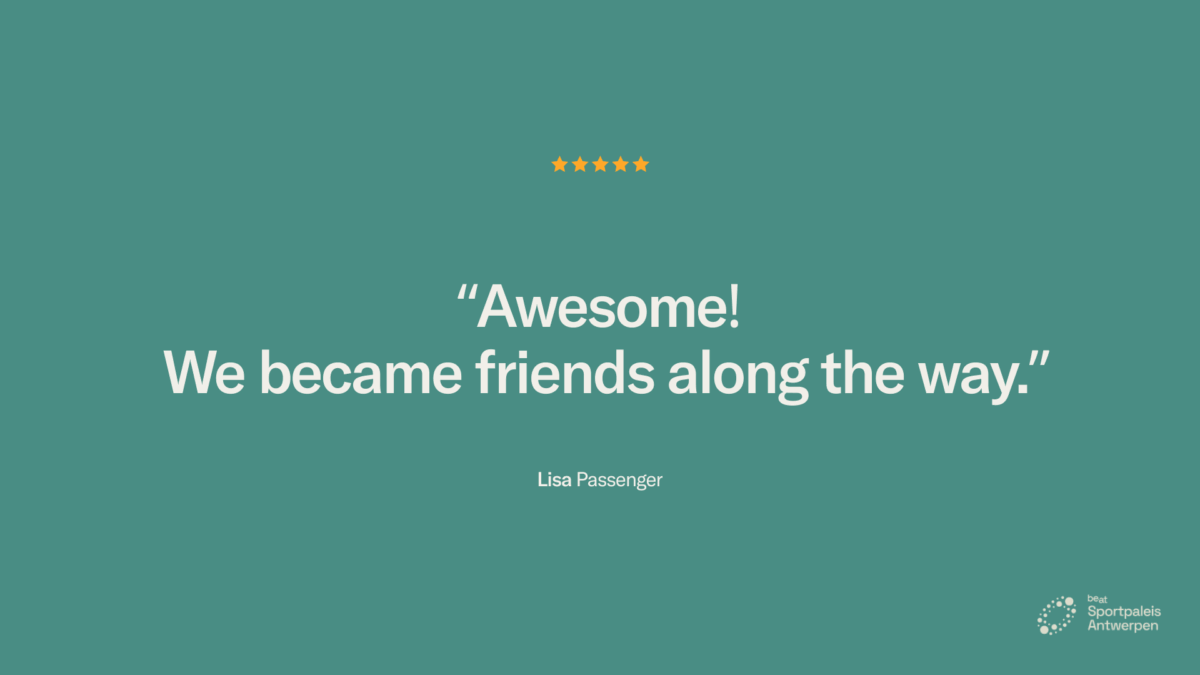
Isabeau van der Kraan
Music & Festivals
Questions? Mail Isabeau
From CO₂ savings to community impact: this is how shared transport transforms your event.
When we talk about sustainable transportation, we're really talking about smart, practical ways to reduce the environmental toll of travel. For events, this means steering clear of a sea of single-occupancy cars and instead championing options like public transport, organised carpooling, and even cycling. Think of it less as an environmental obligation and more as a strategic upgrade for your event. It’s about creating a smoother, more accessible, and genuinely modern experience for everyone involved.
Let’s be honest, event organisation is already a logistical puzzle. Adding sustainability can feel like one more thing on an endless to-do list. But focusing on green mobility isn’t just another box to tick; it’s a strategic advantage. When you prioritise how people get to and from your venue, you elevate your brand, attract a loyal, eco-conscious crowd, and sometimes even find unexpected cost savings. Travel can account for up to 80% of total emissions, making it the most impactful area for you to drive real change.
Lessons from the Dutch approach to mobility
For real-world inspiration, we only need to look at countries already leading the charge. The Netherlands, for example, is a global benchmark with incredibly ambitious goals for its transport sector. The country is aiming for 100% of new vehicle sales to be zero-emission by 2030. Cities like Utrecht are living proof of this commitment, pioneering car-free zones and even building the world’s largest bicycle parking garage. You can learn more about these pioneering efforts in the Netherlands and see firsthand how a national focus on smart mobility can create replicable results.
Digging deeper with attendee insights
While your registration data gives you the “where,” you still need to figure out the “how.” For this, a simple, well-timed survey is your best friend. You don’t need to bombard people with dozens of questions; just focus on the essentials to get the job done. Ask your attendees directly about how they plan to travel. A quick multiple-choice question during registration or in a pre-event email can provide incredibly powerful insights. Try asking things like:
The answers won’t just tell you what people are currently doing, but more importantly, what might convince them to make a different choice. This is exactly the information you need to shape your incentives and communications.
Assessing real-world venue accessibility
Next, it’s time to go beyond a simple pin on a map and evaluate your venue’s true accessibility. This means getting a real-world perspective, either by putting boots on the ground or doing a thorough virtual walk-through with online mapping tools. Take a hard look at the quality of the public transport links and cycling infrastructure, and consider walkability. Understanding these real-world barriers is absolutely essential for creating practical sustainable transportation solutions that people will actually use. This detailed mapping isn’t just about finding problems; it’s also about spotting opportunities. You might discover that a significant chunk of your guests live along a single train line, making a shuttle bus from a key station a highly effective option. Likewise, promoting carpooling to events becomes much easier when you can clearly see the geographic clusters of your attendees. This is where platforms like Slinger can step in, turning a logistical headache into a fantastic community-building moment.
Building a sustainable transport plan that actually works
Alright, you’ve crunched the numbers and have a clear map of your event’s transport footprint. Now for the fun part: moving from data to action. The real goal here isn’t just to tick a few ‘green’ boxes. It’s about creating a transport plan so smart and convenient that the sustainable choice becomes the obvious choice for your attendees. Think of this as your strategic blueprint for gently nudging behaviour. You’ll be weaving together different sustainable transportation solutions to create a seamless experience that feels like a natural part of your event, not some tacked-on afterthought.
Encourage carpooling and cycling
Of course, not every venue is blessed with a major transport hub on its doorstep. That’s where shared and active travel options become your best friends. Your plan should actively encourage people to travel together or get there under their own steam. A simple, user-friendly ride-sharing forum is a great place to start. By embedding a tool like the Slinger widget directly on your event website, you can make carpooling easy without creating an administrative headache for your team. It not only slashes the number of cars on the road but also helps build a sense of community before the doors even open. When you pair this with helpful content, like providing fuel efficiency tips for those who still need to drive, you can really chip away at your event’s carbon footprint.
Getting the word out before the event
Your main job here is to make the green choice the easiest and most obvious one. Before an attendee even considers booking a taxi, your sustainable options should be right there in front of them. This means weaving your message into every digital touchpoint. Start with your event website. Don’t hide your transport plan in some obscure corner of the FAQ page. Give it its own dedicated, easy-to-find “Getting here” section. Fill it with clear guides, simple maps, and direct links to book public transport or sign up for a carpool using a tool like Slinger. Here’s a quick checklist to get you started:
The key is to frame everything around what your attendees get out of it. Instead of “Help us reduce our carbon footprint,” try messaging like, “Skip the traffic and save on parking!” or “Enjoy a stress-free trip and meet fellow attendees on the way.”
What success looks like: defining your metrics
To get the full story, you need to look beyond just one number. A truly effective measurement strategy brings together several key data points to show the complete picture of your success. Think about every green travel option you promoted and figure out how you’ll track each one. Here’s what I’d recommend keeping an eye on:
Here’s something I’ve learned from experience: don’t underestimate the cumulative effect. A single person cycling might not seem like a game-changer, but when you track the data and find out hundreds of attendees made that choice, you suddenly have a powerful story about a massive dent in your event’s carbon footprint.
Getting the full story from your attendees
While platform analytics give you the hard numbers, you need to hear from your attendees to get the full picture and add a human element to your report. This is where a quick post-event survey becomes your best friend. The trick is to keep it short and sweet to get as many responses as possible. Ask direct questions like, “How did you get to our event?” and “Did our green transport options influence your choice?” Their answers can reveal fascinating trends and even give you some brilliant testimonials for your next marketing push. When you combine this feedback with your analytics, you can calculate a much more accurate estimate of your total carbon savings. And since transportation is the biggest polluter at most events, this calculation is absolutely essential for your final impact report.
Ready to make sustainable carpooling a seamless part of your next event? With Slinger, you can embed a ride-sharing widget on your site in minutes, track your impact, and give attendees a simple way to travel together. Discover how Slinger can help you reach your sustainability goals.

Music & Festivals
Questions? Mail Isabeau

Sport & Corporate
Questions? Mail Michiel

